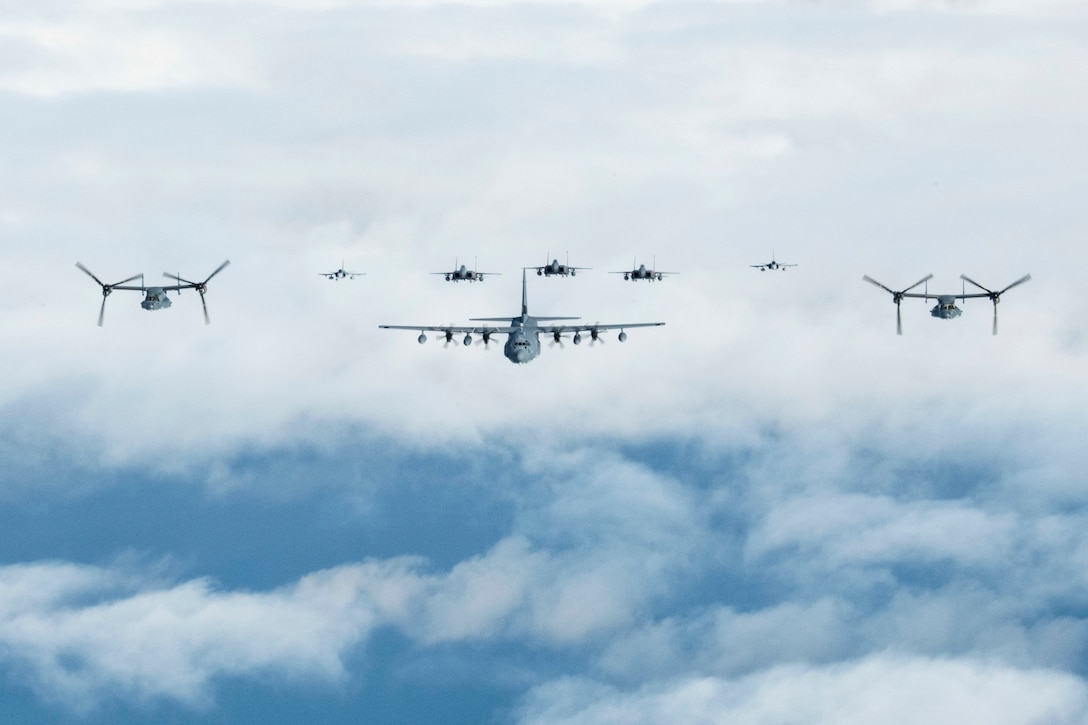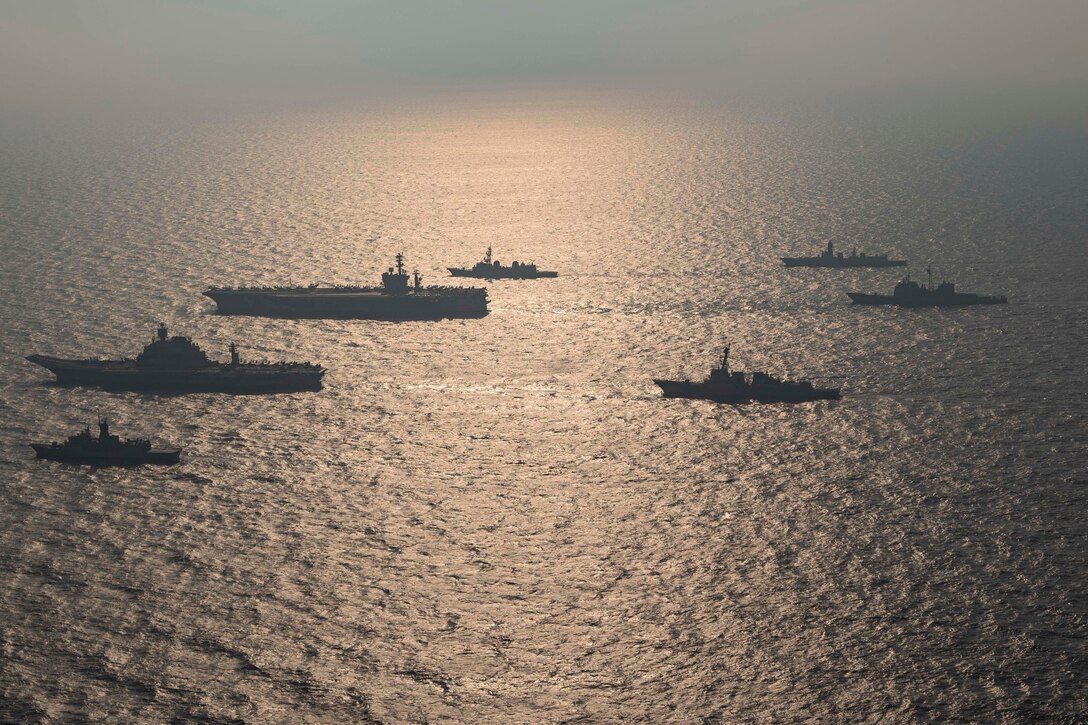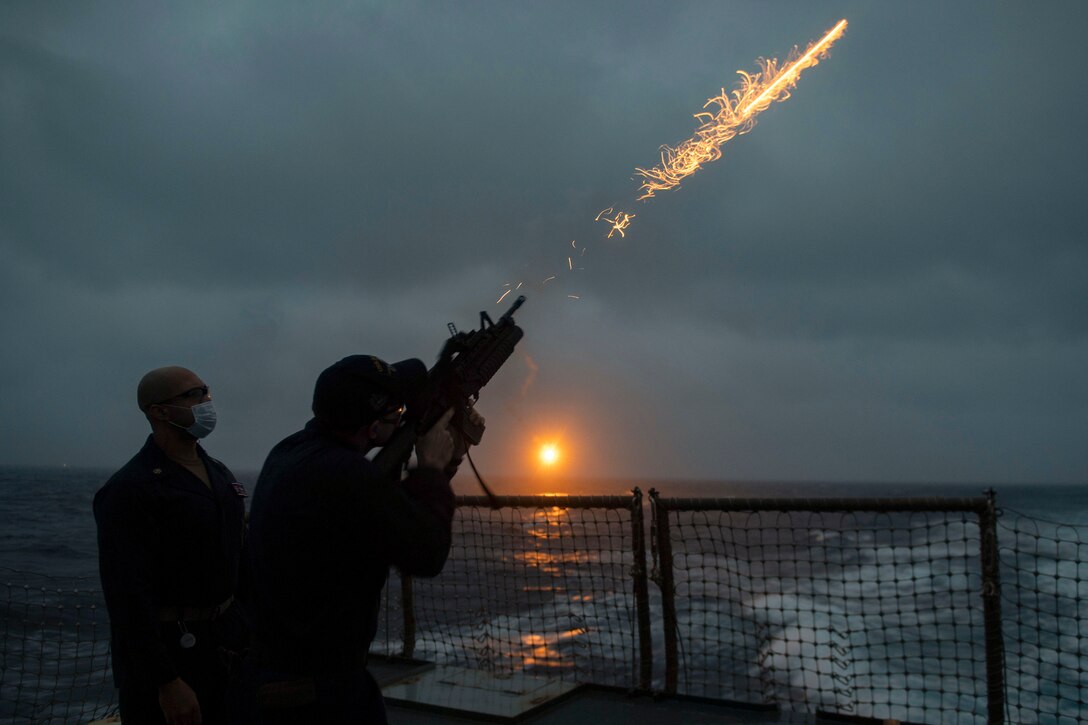An Air Force MC-130J Commando II, two CV-22B Ospreys and three F-15E Strike Eagles fly with two Swedish JAS 39 Gripens over Gotland, Sweden, Nov. 13, 2020, during an exercise to demonstrate the resolve of the Swedish, U.S. and Estonian forces to defend the sovereignty of nations and work with regional partners for a secure and stable Europe.
Tuesday, November 17, 2020
Malabar Formation
U.S., Australian, Indian and Japanese vessels participate in Malabar, an India-led multinational exercise, in the Arabian Sea, Nov. 17, 2020.
Flare Fire
Navy Petty Officer 3rd Class Cullen McArdle fires a flare while Chief Petty Officer Ricardo Stewart observes during an exercise aboard the USS Barry in the Philippine Sea, Nov. 6, 2020.
DOD Outlines Results of Third Annual Department-Wide Audit
Nov. 16, 2020
CHRISTOPHER SHERWOOD: Okay, good morning. I'm Christopher Sherwood. I'll be moderating the press briefing today and follow-on discussion.
The topic of today's briefing is the department's results of the F.Y. '20 full statement audit -- full financial statement audit. Our speaker is performing the duties of the Undersecretary of Defense Comptroller and Chief Financial Officer Thomas W. Harker. Our discussion is on the record, embargoed until you receive an e-mail from me later this evening once the Office of the Inspector General sends out agency-wide results to the comptroller. I will send an e-mail to you releasing the embargo.
We have 30 minutes for this -- for questions from those attending here in person and attending by phone. I will provide a five-minute warning. Please introduce yourselves and your organization, and limit your question -- questions to one initial question and one follow-up.
With that, I would -- I will turn it over to Undersecretary Harker. Sir?
PTDO COMPTROLLER THOMAS W. HARKER: Thanks, Chris.
Good morning, everybody. My name's Tom Harker, for those who don't know me. I'm the assistant secretary of the Navy for financial management and comptroller, performing the duties of undersecretary of defense comptroller. I've been performing those duties since June, and anticipate continuing for a while.
I'm pleased to report this year that DOD has completed its third annual comprehensive financial statement audit, covering the entire enterprise. We also have a couple of organizations who are still under audit because they need a little more time to show positive results this year.
There's two key themes that I want you to take away from this session today, and that's continued progress and value to the warfighting.
We continue to conduct one large audit of the Department of Defense, which consists of 24 standalone audits of the military services and the larger defense agencies. Our goal is to get a clean financial statement audit opinion for the Department of Defense as a whole, and we believe that the best path to accomplish that is to conduct standalone audits on each of our services and defense agencies.
We've been clear that this is a journey that will require a sustained effort over several years, and we remain committed to this goal and continue to make significant progress.
Each year, we work to sustain the current clean opinions, increase the number of agencies or military services with clean opinions, and eliminate material weaknesses at both the department level as well as the component agency level.
For sustainment this year, every agency that had a clean opinion last year sustained a clean opinion this year, in spite of significant challenges due to COVID. They're all listed on the fact sheet that I believe Chris is going to provide you, but suffice it to say that it still takes a lot of work to maintain an opinion, and these agencies have done that in spite of the size and complexity of their agency and the challenges we faced this year with COVID which prevented us from doing a lot of testing, travel and that sort of thing, as you'd imagine.
The audit for the OIG has not been completed yet, but we anticipate completing that by the second quarter of fiscal year '21, and they anticipate getting another clean opinion, as well.
For continued progress, this year we're very pleased to report that we anticipate getting a new clean opinion for the DISA working capital fund. DISA's worked real hard this year to improve their business processes and controls. That's resulted in several operational improvements such as decreasing the time required to deliver property to their customers, improving the accuracy of their property records, and improve the accuracy of their financial statements. It also generates a clean opinion on the working capital fund, but I spoke about the three operational things first because those are really more important to warfighting than just the financial statement audit opinion. They had a 80 percent decrease in the time from award to delivery for a lot of their equipment that they have done, based on the improvements they've made to the business processes and controls over the last several years. They also were able to increase their data reliability through the use of robotic process automation and other tools, which has improved the -- or, the -- decreased the cost and improved the accuracy of their financial data.
In addition to the clean opinion on their working capital fund this year, we also anticipate them getting a clean opinion on their general funds next year, so this is an area where they've made a lot of investment in time and effort to improve their business processes, and we'll see the audit results this year, as well as next year.
In addition to the new opinion for DISA's working capital fund, we also have had several material weaknesses be eliminated from last year, two of them at the department level. The Navy also eliminated three material weaknesses, two on their general fund, one on their working capital fund, and the Marine Corps eliminated one material weakness.
We've also had a number of the Defense agencies eliminate material weaknesses because we made an accounting change that moved all of our real property onto the balance sheets of the military departments or the Washington Headquarters Service, so that was a change in accounting procedure that resulted in elimination of material weaknesses. Putting it all on the military departments improves our ability to account for property, and it puts it all in the hands of the services and WHS.
Lastly, we continue to progress in the elimination of auditor-identified discrepancies. We had 3,248 discrepancies identified by all of the different auditors over the 24 component audits during F.Y. '19. We've cleared 530 of those to date, and we anticipate clearing a couple hundred more between now and the end of December, when the auditors finish all of their work. This is a significant accomplishment in spite of COVID, which has prevented a lot of the auditors from getting out and doing testing, and we'll be able to close more than 20 percent of the findings, which is similar to the progress we made last year.
So the bottom line in simple terms is the auditors found certain areas have gotten much better this year, in spite of the challenges faced it by COVID, and that we understand this audit is a massive undertaking. We have a fact sheet that we'll be providing that gives you a lot of these things I mentioned in more detail. But the audit, the bottom line is, it's part of our key component of our reform effort. It's how we go in and we make our business processes more effective so that we have better data and better outcomes.
So some of the value that comes from audit, I want to talk about that real quick.
First off, one of the things the auditors do is they look at our I.T. systems, and they go in and they test the controls around our I.T. system so we have good access controls, we have good segregation of duties -- that kind of thing. All of the steps we take to fix the things that they find helps decrease our cyber vulnerabilities. So it's not just the audit; it's also improving our cybersecurity.
The next thing that is key is the audit has taken a deep dive into our property, plant, and equipment, and our inventory and operating materials and supplies. During the first couple years of audit they found significant deficiencies in these areas, but we've made a lot of progress identifying areas where we had errors, going in and doing a lot of the cleanup work. And so you see now, as they go forward, they've cleaned up our accuracy of our property records. That helps us significantly because it lets us know what to order, what we already have.
In a lot of cases, auditors found things that weren't on the books anymore, things where we bought it out of the working capital fund and taking it to the end user, and the end user didn't need it right then, so they put it on a shelf, and then people forgot that it was on the shelf. Navy did a lot of work in this area. They were able to find, I think, $3.4 billion over the last several years, and they've put more than $50 million-worth of items onto aircrafts and ships as immediate, "Hey, we found this. We need it. Let's put it out there." And they've put another $2.7 billion back onto the books, as these items are available for people to order. So it's a significant improvement in how they manage their property.
We've also had another improvement from the audit in that it's helped us identify that we have too many systems. We're spending a lot of effort to go in and consolidate those systems and eliminate the legacy ones. That improves both our cybersecurity by eliminating old legacy COBOL-based software systems, and also saves us a lot of money. When you run nine systems and you can get that down to two, that saves you a significant amount of money. And so you're seeing that across all the defense agencies, as well as the military services not just on their financial systems, but on a lot of the other business systems that feed into the financial like H.R. or logistics.
So the last thing is as we get better, more accurate financial data, that gives us better ability to use that data to make decisions and it gives senior leaders the ability to ask better questions. We've been able to go through and build a data analytics tool called AVNA. It's for advancing analytics -- that we pull all of the general ledger data from the various I.T. systems, and that gives information available in real-time to senior leaders. They can combine that information with H.R. information, logistics information, and it gives them more ability to ask better questions. It also gives people at lower levels ability to ask better questions too, because they can see things at a more granular level that help them make better decisions, as well.
So we remain committed to sustaining this effort and demonstrating greater progress each year until the department receives and sustains a clean audit opinions. We've prepared the press release -- Chris will provide that -- and I'm ready to answer any questions. One thing I want to let you all know is that I'm hard of hearing. I have hearing aids, and so I would ask that we're all socially-distanced here. If you could please remove your mask, it enables me to read your lips, and also speak loudly so that I can hear you. I'd appreciate it. Thank you much.
MODERATOR: Okay. So we'll start with the room, and we'll start with Tony Capaccio.
Q: Hi, sir. Tony Capaccio with Bloomberg. We -- we've been covering this for the last couple years. Now, last year the general funds and the working capital funds of the Army, Navy, Marines, DLA, and SOCOM and TRANSCOM and D.H. -- the health programs all received disclaimers of opinion, which is not a good thing in your world.
MR. HARKER: Yes.
Q: Have those improved, or do -- do -- have those disclaimers of opinion continued?
MR. HARKER: We continue to receive disclaimers of opinion for the ones listed on the sheet. We have an overall disclaimer, and there's also several significant large agencies that have disclaimers. The only improved opinion we had this year was the DISA working capital fund.
Q: Okay. Can I ask a follow-up, too? Last year DOD said this -- the effort about a billion dollars. Is that roughly the -- the amount? And how many trillions of dollars of assets, just for -- for the layperson, did you audit that were reviewed?
MR. HARKER: How many did we --
Q: Okay, last -- last year the -- the press release said that $2.9 trillion of DOD assets --
MR. HARKER: Oh, that's -- yes.
Q: -- were -- were reviewed. I just -- for size and scope.
MR. HARKER: Yes. So we reviewed similar total assets, about $2.9 trillion of -- roughly. The challenges we've had are ensuring the accuracy of that. So when we look at elements of our property plant and equipment and our other assets, about a trillion of it is in government bonds. That's money that we have invested in government bonds which we hold as an offset to our actuarial pension liability. So the military service members have a pension liability. We also have assets that support that.
Q: Yes.
MR. HARKER: So those are all clean. The good news is we have a trillion dollars-worth out of our $2.9 trillion where we have a clean opinion on the audit that looks at that. The $2. -- the liability, our biggest liability is that pension, and that also is clean. So when we're looking at these things, we have significant areas -- real property, there's been a lot of improvement there. I mentioned that we're moving real property from all of the defense agencies' balance sheets onto the military services and the Washington Headquarters Service. That gives us only four places where we have to hold real property data, which makes it easier for us to audit. It also gives us better visibility into what real property we have, where it is, what condition it's in so that we can make better operational decisions about the acquisition of property.
As you can imagine with COVID, we've had people increase telework significantly. And so now we look at all of our real property, we say "what do we own, what are we leasing, do we need to continue leasing or do we bring people back into -- behind the fence line?" So it's -- it's given us a lot more better data.
Q: Great, thanks.
MR. HARKER: Yep.
MR. SHERWOOD: Okay, we'll -- we'll go to the phones here for a second, and Richard Sisk with Military.com. Do you have a question please?
Q: Yes, can you hear me, sir?
MR. SHERWOOD: Yeah, we can hear you.
Q: Okay. Mr. Harker, did I hear you say, you know, it'll be several years before you could expect a clean audit? And as -- as a follow, did this audit -- did you look at Afghanistan and what you might have to counter, not count -- considering -- considering that the troops might be withdrawing? What -- what's the status of Afghanistan as far as an audit goes?
MR. HARKER: So -- so the -- sir, could you repeat the question please?
MR. SHERWOOD: I can -- I can repeat that absolutely. So Richard asked if -- basically in Afghanistan, if -- with regards to a count or in -- in the audit, was anything with regards to a troop drawdown that the audit had captured? And Richard, can you repeat your first question? It was before the --
Q: Yeah, I thought Mr. Harker said it'd be several years he expected before there -- there really would be a clean audit.
MR. SHERWOOD: Thank you.
MR. HARKER: Okay, so first, going through the process of being audited, each year the auditors dive deeper and they find more things. So you look at the process of getting to a clean opinion for federal agencies, it can take a long time.
DHS is the most recent agency to get a first clean opinion and it took them 10 years. We had a meeting last week where each of the military services presented their timelines to get to a clean opinion for us and that's roughly similar to what the DHS timeline was. If you look at when we first started being audited in 2017, we're on track or we have plans that are resourced to get us to a clean opinion around that same timeframe.
Second question was dealing with assets and expenditures in Afghanistan. As the audit unfolds, the auditors pull items to test as part of their audit. When they do tests of property, one of the challenges we faced this year during COVID was the travel bans and we were not able to send auditors out and do that much travel, so they weren't able to do as much testing on the ground.
In some cases, they were able to do virtual testing, where they -- where they weren't on a classified location and they could use cell phones to do FaceTime or Zoom meetings and actually see the serial numbers on assets but it was limited because of COVID. I don't know specifically whether any of our auditors went to Afghanistan but we can get back with you that information.
MR. SHERWOOD: Okay. And we'll go back to the room. I think Ryan, you had your hand up first. Go ahead.
Q: Excuse me. Thank you, sir, for doing this. I -- I just wanted -- Tony had asked how much the audit had cost, and I don't know if I -- I had heard that, but I actually just -- you said something at the beginning, where you said you expected to be doing this for some time to come.
I guess -- so has there been any impact by the shakeup here at the Pentagon leadership on the audit or the proof -- getting sign off from Secretary's office? Did that delay anything? And then do you expect to be carrying out this audit next year?
MR. HARKER: So the department is required to be under audit for several different laws. It's written into the NDAA that we start -- and we did start, and 2017 was the first year -- that continues to be a priority for the committees. It's also a requirement of the CFO Act of 1990. So the audit will continue.
The cost of the audit, you asked, that was around $203 million this year for all of the different audits that were conducted at the 24 sub-component level, as well as some of the -- and if I get too technical, I apologize -- but we do statement of standards of attestation agreements, number 18 service organization control reports, which is a mini audit of a process at places like DFAS or other areas, where they perform a process of the service provider for large elements of DOD.
So we do a small audit of one of those processes, we call it a SOC Report, Service Organization Control Report, and then other auditors rely on that work. So -- but the total cost was $203 million for all of that. So second question?
Q: So any of the, I mean, leadership -- obviously you said you've been here and -- and obviously there's been a lot of change. Has that -- did that impact getting sign off on the audit, did that impact any of the processes at all?
MR. HARKER: It did not. We have a process in place where our DCFO Office inside the OSD comptroller shop goes and routes materials up for explanation and signature. The -- in various years, the Deputy Secretary or the Secretary has signed the reports. This year, the Deputy Secretary signed it. As you know, Secretary Norquist is very familiar with everything we're doing because of his role as Comptroller. I mean, he's meeting with the Secretary today to walk him through everything that he needs to know about the audit but, you know, the -- the Deputy Secretary is an expert on this.
Q: Great, thanks.
MR. HARKER: So --
MR. SHERWOOD: We're going to stay in the room. Lara?
Q: Hi, sir, thanks for doing this.
MR. HARKER: Thank you.
Q: Can I just clarify -- you -- you told Tony that you reviewed roughly 2.9 trillion assets this year. Is this -- and you said that was similar to last year. Is that on top of what you did last year or is it the same number?
MR. HARKER: 2.9 trillion is the total assets on our balance sheet. And so all of those assets are under audit. So it's the same 2.9 trillion, it's just when the auditors do their samples, they look at different things.
Q: Okay. And then also, can you just say a little it more about the -- can you quantify the impact that COVID had, what didn't get done, did things get done less efficiently? Can you just say more about that?
MR. HARKER: Certainly. So when -- when auditors do test work, their best way to do test work was to go out and see and touch an asset and say "yes, this asset exists," and to walk around an area and look and say "are there other assets that exist in this area that might not be in your books?"
So the best thing for them is to be able to go out and come in and, you know, assuming these chairs are assets, it's like "Okay, look at that one, look at that one, look at all of them, check the serial numbers, make sure that verifies everything that's on the books," then also look and say "are there some here that aren't on your books?" So they call that existence testing and completeness. Existence is "does everything that's on your books exist?" Completeness is "is everything that does exist on your books?"
Because of COVID, they had a hard time doing completeness testing. It's hard for them to be able to go and validate that there's something that -- that everything's on your books, because they're not physically there.
They were able to do existence testing for a lot of the items by going and using digital media for things or pictures, take a picture of the serial number and a picture of the asset, you can kind of see the progression. So a lot of the agencies that had clean opinions were able to do things that way. Some of the ones that were progressing were able to do things that way, but it did create challenges.
The other challenge is just the lack of face-to-face ability to look over things and talk through it. Zoom meetings are useful, but it's not as good as being in the same room, looking at the same piece of paper and talking about it, the face-to-face communications has made a challenge.
Q: Were there any agencies, though, that maybe didn't get a clean audit because --
MR. HARKER: Sorry?
Q: Were there any agencies though that maybe didn't get a clean audit or didn't make as much progress because of the challenges due to COVID? Like what was the impact?
MR. HARKER: I would say there were a number of challenges that everyone dealt with for COVID. When you talk to private sector companies, a lot of them had challenges in their audits as well because of the same things I just talked about with regard to property testing.
The audit standards folks went around and they identified ways of providing assurance, so they worked with all the big audit firms on how can they do the testing, and then we incorporated a lot of those same standards.
Specific agencies, the focus for us was let's get -- for the ones that have clean opinions and do everything we need to do to support them in sustaining those clean opinions. And then for the agencies that didn't, let's figure out how we can help them in executing their corrective action plans.
You know, the Navy was able to clear three material weaknesses, that's a huge accomplishment in spite of COVID. They might have gotten a fourth if we hadn't had COVID. The one that they came close on was their environmental and disposal -- I'm sorry, no. Their utilities. They got environmental and disposal liabilities.
So they were looking at the utilities on the bases when in a lot of cases that's underground, sewage pipes, power transmission facilities, all that, stuff where having the auditors on-site would have made that easier.
MR. SHERWOOD: Okay, we'll go back over to the phone lines.
Aaron Mehta, Defense News, do you have a question, please?
Q: I do, thanks.
This follows up a little bit on a few things you said. With the understanding that this is a likely 10-year process -- you said that's how long it took DHS -- are you at all, I guess, disappointed or did you expect more progress this year versus last year?
MR. SHERWOOD: More progress this year over last year, did you expect more?
MR. HARKER: Do we expect more next year or did we make more this year than last year?
Q: Did you expect more this year compared to last year? I think, like, last year there was a lot of stuff that Ms. McCusker told us had gotten close and had just kind of crossed that threshold. But it sounds like, from what you've said, only one major working capital fund seemed to have improved this year.
MR. SHERWOOD: So, bottom line, yeah, we got it -- thank you, Aaron. So the bottom line is did you expect more this year?
MR. HARKER: We didn't expect more than we received. I mean, I think any time you have a new agency get a clean opinion, that's a huge accomplishment. So for us, last year, we did not have any agencies make -- get new clean opinions, this year we did. So DISA's working capital fund getting a clean opinion there was a significant improvement.
We also were able to eliminate material weaknesses this year, which is something that, last year, only Navy did it. And it was one material weakness. This year we had two material weaknesses at the department level, three at Navy, one at Marine Corps, and then we were also able to clean up a lot of the smaller ones for real property by consolidating real property.
So what you're seeing is a maturation of the process. Many of the individual agencies or services are developing more capability and better accounting skills so that they can resolve a lot of the problems, and you're seeing significant process in certain areas.
I may be a little biased because I came from Navy, but the Navy and Marine Corps have both made huge progress this year. The Marine Corps did make a push for an audit opinion this year. They were initially at the start of the year really focused on trying to get there, and they fell short.
A lot of that was due to COVID, but some of it was due to just lessons learned during the process of being audited and going for a full-scope audit opinion. That enabled them to clear a material weakness, and also increase the accuracy of a lot of their property planning and equipment balances, and their inventory and operating materials and supplies.
They cleaned up military payroll so that when the auditors tested military payroll -- and with our own internal testing -- they got 100 percent accuracy, which is the first time any of our services have done that.
So the Marine Corps made a ton of progress, it just didn't quite result in that audit opinion. And I think that was primarily due to COVID.
MR. SHERWOOD: Aaron, did that answer your question? Do you have a follow-up?
Q: That's good, thank you.
MR. SHERWOOD: All right, I'll go over to Jeff Schogol with Task and Purpose. Do you have a question, please?
Q: Hi, thank you very much. If I understood you correctly, you said the Defense Department did not pass the audit this year. And since it first started getting audited in 2017, and it will take 10 years, it will be until 2027 until the Pentagon passes this audit. Is that right?
MR. HARKER: The -- yes, I would say that's right. We did not pass -- we had a disclaimer on the consolidated opinion, we had several other disclaimers on the individual audits. And this is similar in timeline to what the Department of Homeland Security experienced during their quest for an audit.
Q: If I could ask a follow-up question, if it's taking the Pentagon 10 years to pass an audit, what is it doing wrong? Can you elaborate on where it's overspending and money being wasted, which is the purpose of the audit?
MR. HARKER: So one of the things that -- if I could come at your question from a different point of view, we spent $200 million being audited this year. But when we look at the return on investment for the process improvements that we're making around accountability for property, accountability for inventory, that type of thing, we've identified more than $700 million in savings based on these process improvements.
So it's one of those things that it's not that anyone's doing anything wrong, it's that there's -- this is something that's never been done for an entity of the size and complexity as the Department of Defense. And so we have not built up a robust capability in financial accounting. Our focus has been many other things: executing the budget, acquiring weapons systems, and whatnot.
So as we're building that capability, we're executing corrective actions to the things that don't comply with accounting principles in order to get into compliance. But more importantly, we're improving the accuracy of our financial information so that decision-makers can make better decisions.
MR. SHERWOOD: Okay, we have time for one last question in the room. Tony, please?
(CROSSTALK)
Q: -- can you clarify the cost issue? The billion dollars, the cost issue. The $230 million you talked about was preparing the infrastructure for audit, but there are audit fees and then there's cost to remediate deficiencies. Those cumulative were over a billion dollars last year. I just want to -- if Chris could -- because there's going to be people saying, "Oh, it went from a billion to $200 million."
MR. HARKER: (inaudible) --
Q: You -- you had a subset. That's -- I -- (inaudible) --
MR. HARKER: The cost -- the cost of the audit this year was $203 million for when you add up all the audits. Somewhere last year, I think last year was around $195 million. The year before that was around $200 million. So the cost of the audits has stayed the same.
The investment that we've put into cleaning up deficiencies, that's always been a hard one to quantify. It was around a billion last year, but it's -- that's kind of a modeled number, and it's around the same this year. We're -- we're pulling that data together.
Q: Okay, and then the auditor fees for Ernst & Young and all the companies, that's a separate subset?
MR. HARKER: That's the $200 million.
Q: Oh, that's part of it?
MR. HARKER: That's the auditor fees. That's what we're paying the independent public accounting firms that come audit us.
Q: Okay.
MR. HARKER: That's -- and that's part of the -- the $1 billion that you cited for last year.
Q: Okay, I just want to be -- just see if Chris can get just the cumulative cost remediation auditor fees and preparations. So it's --
MR. HARKER: There's a report to Congress that we prepare, and we'll make sure that you get a copy of that.
Q: (inaudible) --
MR. HARKER: It goes over all of that.
Q: I'm trying to reconcile your figures from last year.
MR. SHERWOOD: All right. And sir, I'll offer any closing comments you have, and then we'll wrap it up.
MR. HARKER: Appreciate you-all's interest, and thank you for coming out and dialing in, if you're on the phone. This was something where we've invested a lot of time and effort in getting to the audit, and being audited these last several years has revealed a lot of information to us on the areas where we can improve our processes, become more efficient, more effective, and better stewards of taxpayer resources.
MR. SHERWOOD: Okay. Thank you for your time.
Readout for Acting U.S. Secretary of Defense Miller's Phone Call With Republic of Korea Minister of National Defense Suh
Nov. 17, 2020
On November 17, Acting Secretary of Defense, Christopher C. Miller, conducted a phone call with the Republic of Korea (ROK) Minister of National Defense Suh Wook to reaffirm the enduring strength of the U.S.-ROK Alliance. Secretary Miller and Minister Suh discussed the outcome of the 52nd Security Consultative Meeting (SCM) in October and underscored the U.S. commitment to defend South Korea through the combined defense posture of the U.S.-ROK Alliance. Minister Suh and Secretary Miller both reflected on the importance of maintaining communication to deepen bilateral cooperation. The two leaders further pledged to pursue continued progress on the mutual security interests of the U.S.-ROK Alliance.
DOD Diversity Must Start With Youngest Americans
Nov. 17, 2020 | BY C. Todd Lopez , DOD News
Diversity and inclusion are a top priority for the Defense Department, the department's director for manpower and personnel said today.
"The department has undergone a tremendous task force effort with regard to diversity and inclusion, and the secretary is soon to approve and publish that document," Air Force Maj. Gen. Lenny J. Richoux said during an online discussion hosted by the Department of Energy.
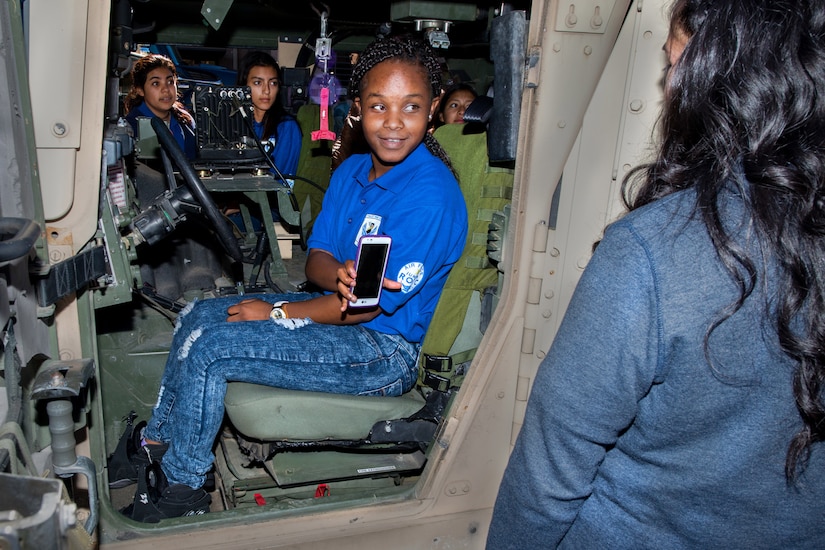
"For [Chairman of the Joint Chiefs of Staff Army Gen. Mark A. Milley], one of his desires is to diversify the senior leadership, the joint senior leadership and senior leadership writ large across the department," Richoux said. "Everyone knows it takes about 24 or 25 years to make a general officer and can take almost that long to make an E9 — a senior leader E9 in all the branches."
The length of time it takes to develop a senior leader in the department means that in order to reach diversity and inclusion goals, the department must now start eyeing the youngest Americans as candidates for future leadership positions.
"We've been working on this for a long time. But the department has made some substantive changes to improve diversity and inclusion," Richoux said. "I think one of those areas that I've been trying to work with the services on is how and from where we recruit."
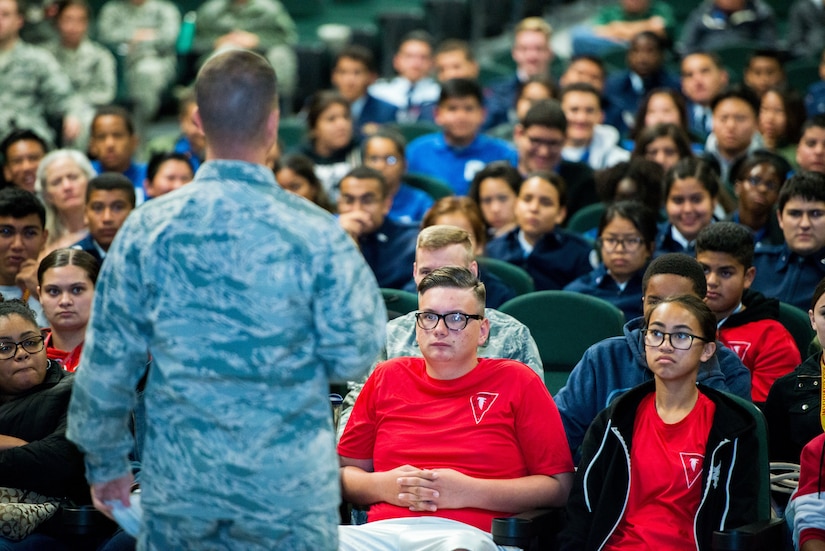
There are more than 100 historically black colleges and universities in the U.S. today, and those schools are great places, Richoux said, to start looking for America's next military leaders.
"[We're] increasing scholarship opportunities and feeding into ROTC," he said, adding that Americans even younger than college-age students are also candidates to one day be leaders.
The Reserve Officer Training Corps programs at HBCUs are fed by other, more junior programs, such as Junior ROTC, Civil Air Patrol, Sea Cadets or the Young Marines, he said.

Richoux said those programs marry STEM with military service and drive a culture as a sense of purpose and service for our young people. "I think it starts young ... when they're formative, when they're figuring out what they want to do in these programs that tie them to service, STEM ... I think it's a thread of interest," he said.
Richoux also said private industry might take an interest in such programs because by encouraging participation early and by being involved, those young Americans will eventually transition out of military service — as 200,000 persons do each year — and seek jobs in the private sector. That will constitute a pool of potential private sector employees who are equipped with both STEM training and leadership skills.
Fitness Test
Air Force Airman 1st Class Brandon Peacock performs a pushup in front of Army Sgt. 1st Class Danny Gonzalez during the Army Combat Fitness Test at Joint Base McGuire-Dix-Lakehurst, N.J., Oct. 29, 2020.
USO Delivers Three-Millionth Care Package
Nov. 17, 2020 | BY Air Force Tech Sgt. Dana Cable , Combined Joint Task Force Horn of Africa
The USO at Camp Lemonnier has been supporting military members since they opened their doors in 2015. This USO site is the only physical USO on the continent of Africa and handles a large area of responsibility.
"It's exciting to expand the USO support across the Horn of Africa just in time for the holidays, the most challenging time to be separated from loved ones," said Holly Coffer, USO Camp Lemonnier manager. "We hope this trip leads to many more and that we're able to continue expanding USO support across the region."
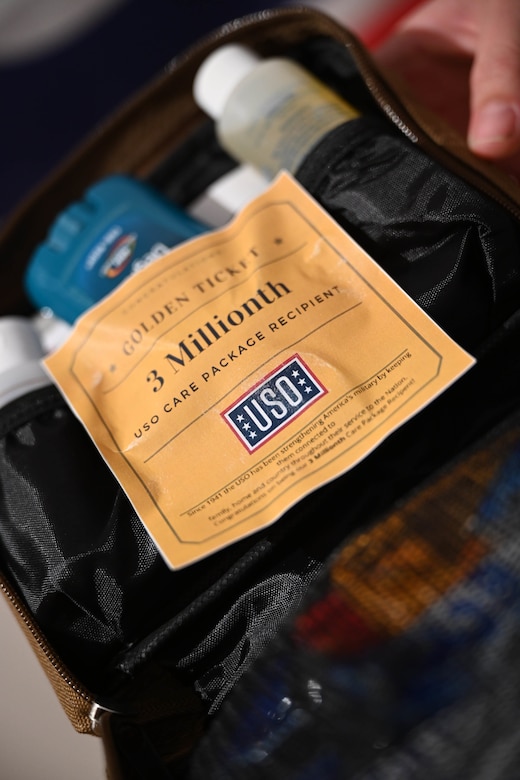
Coffer said that due to COVID-19 restrictions, this is the first trip that has been made to other sites in East Africa in quite some time.
"It's a privilege to be with them in these remote locations, and it allows us to bring a touch of home in some of the most far-flung corners of the world," Coffer said. "We celebrate connections in so many ways — from roasting s'mores in the mountains of Afghanistan, to helping a deployed dad surprise his daughter on her graduation day, to hosting a virtual wedding ceremony for service members separated by COVID. We're in these remote locations to make their deployment and separation from family, home and country a little bit easier."
For many service members, receiving a care package is more than just a gift — it's a reminder that someone cares and that they are not forgotten.
"I have been on many deployments, and the USO has had a footprint there," said Navy Command Master Chief Petty Officer Alex Hebert, senior enlisted leader, Combined Joint Task Force – Horn of Africa (CJTF-HOA). "It brings that part of home to you that you can't find while on deployment and brings a sense of normalcy in the middle of conflict."
Coffer and Hebert were able to present the three-millionth care package during a night of Bingo and trivia provided by the USO. The recipient of the package was Army Spc. Kayla Lystad, a Minnesota National Guardsmen deployed with Task Force Bayonet in support of CJTF-HOA.

"The USO helps with so many aspects of morale," Lystad said. "You guys put in so much work and effort and have to travel to some not-so-nice places and always have a smile on your face — so I just want to say thank you."
Hebert and Coffer both agreed they hope this is the first trip of many throughout East Africa.
"Our goal is to connect service members and create morale-boosting activities and engagements that help alleviate some of the stress brought on by being in the military," Coffer said. "We focus not just on the service member but the whole family."
In addition to the delivery of care packages during the recent trip, the USO was able to provide forward-deployed service members the opportunity to utilize the Bob Hope Legacy Reading program.
"The USO took our reading program mobile and set up a location where service members can record themselves reading a book to their children," Coffer said. "The USO will then mail the book and the recording home at no charge to the service member. It's a great way for the service member to keep reading those bedtime stories to their children no matter where in the world they're located."

According to Coffer, working with the USO is a rewarding experience and a wonderful opportunity to show service members how much appreciation she has for what they do and the sacrifices they make.
The USO was formed in 1941 as a response to President Roosevelt's
call for a civilian organization to boost the morale of U.S. troops
during WWII.
"This represents almost 80 years of the USO standing side by side with
America's military no matter how far from home they serve," Coffer said.
"It also represents the countless staff members and volunteers who've
shared their time, talents and treasures in an effort to let our
military know we stand behind them every step of the way. Where they go,
we go."
DOD Works With Partner Nations to Avoid Civilian Casualties During War
Nov. 17, 2020 | BY David Vergun , DOD News
A panel of Defense Department experts on the topic spoke remotely at the American Society of International Law.
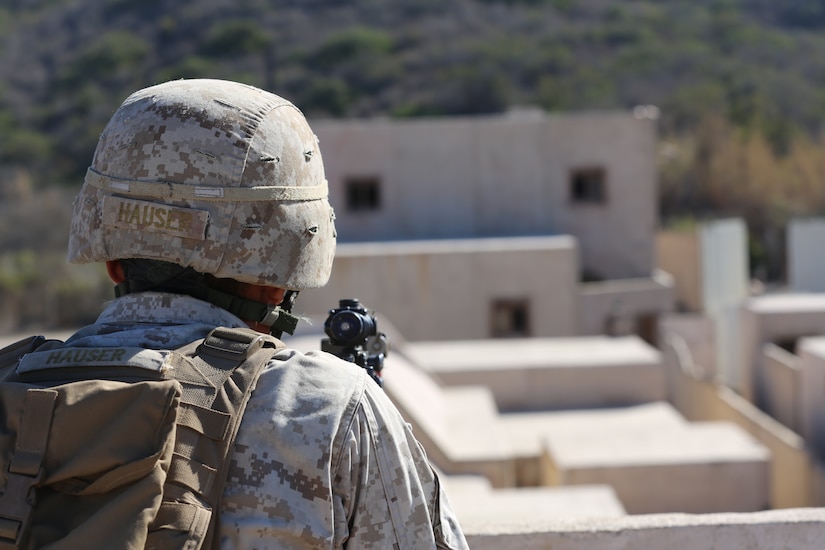
The American military's strong commitment to minimizing civilian casualties to the maximum extent possible and adhering to international humanitarian law principles is enculturated and internalized at all levels of command and across the services, Air Force Maj. John Legg, assistant professor of law at the U.S. Air Force Academy, said.
At the educational level in all of the services, commanders are inculcated with the moral and legal obligation to mitigate civilian harm, he said.
Also, structures are in place in the military to mitigate civilian casualties, he said, adding that the department works closely with allies and partners to ensure these norms are followed.
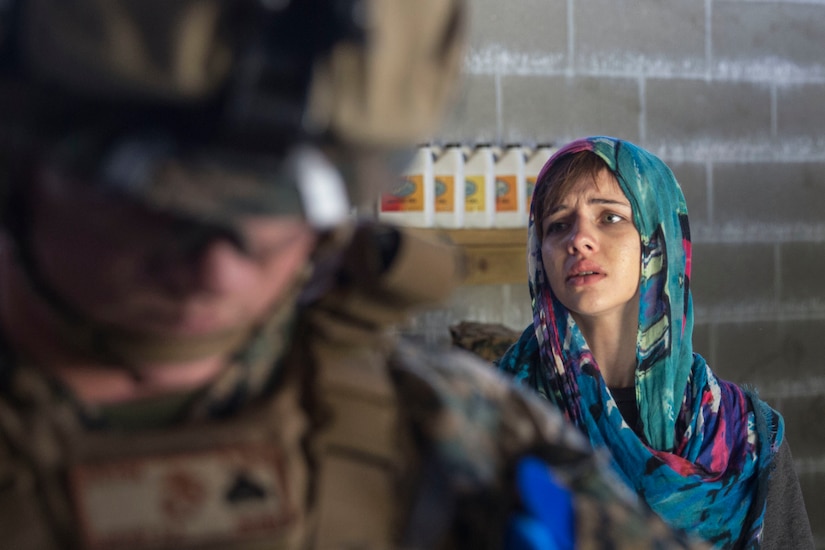
Foreign military sales are contingent on the partner nations' respect for mitigating civilian casualties, Loren Voss, senior advisor for Civilian Harm Mitigation at the Defense Security Cooperation Agency, said.
Factors that determine whether or not an FMS transfer is approved include looking at how the weapons will impact regional stability, how the arms are intended to be used, how the transfer affects U.S. national security and foreign policy interests and how the recipient nations will mitigate any risk of civilian casualties, she said.
The State Department's Office of Regional Security Arms Transfers oversees this effort in cooperation with DSCA and the geographic combatant commands, as well as with congressional oversight, she said.
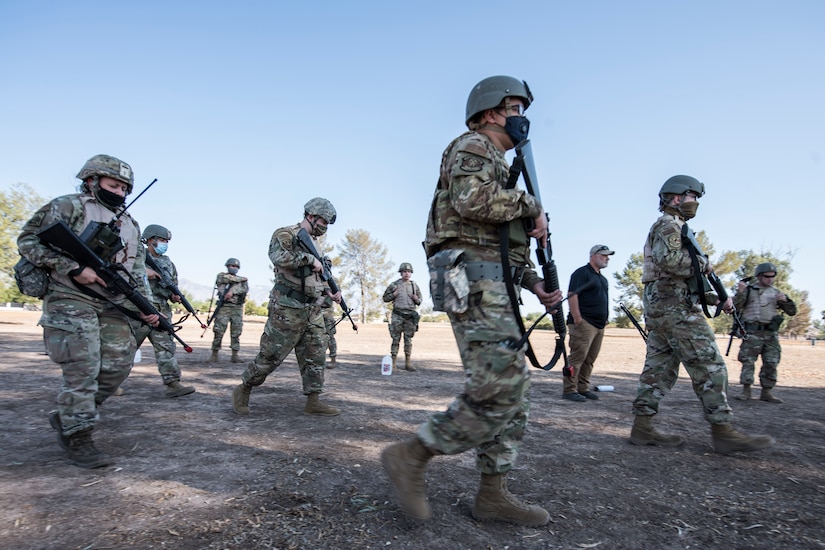
Retired Army Col. Randy Bagwell, senior director of International Services — U.S. Programs at the American Red Cross, said there are cultural differences among nations. Some cultures respect the rule of law more than others and compliance with the Law of Armed Conflict is much higher in those nations. Also, some nations lack the training and education necessary to reduce civilian harm.
Nicholas W. Mull, Civilian Harm Mitigation Program manager at the Defense Institute of International Legal Studies, said his organization promotes partner nations' military and institutional awareness of the Law of Armed Conflict through education and advisory efforts, as well as plans to ensure shared normative values dedicated to the rule of law.
U.S. Successfully Conducts SM-3 Block IIA Intercept Test Against an Intercontinental Ballistic Missile Target
Nov. 17, 2020
The U.S. Missile Defense Agency (MDA), and U.S. Navy sailors aboard the USS John Finn (DDG-113), an Aegis Ballistic Missile Defense (BMD) System-equipped destroyer, intercepted and destroyed a threat-representative Intercontinental Ballistic Missile (ICBM) target with a Standard Missile-3 (SM-3) Block IIA missile during a flight test demonstration in the broad ocean area northeast of Hawaii, Nov. 16.
At approximately 7:50 p.m. Hawaii Standard Time, (12:50 a.m., Nov. 17, Eastern Standard Time), the ICBM-representative target was launched from the Ronald Reagan Ballistic Missile Defense Test Site, located on Kwajalein Atoll in the Republic of the Marshall Islands, toward the broad ocean area northeast of Hawaii. In this developmental test, the destroyer used engage-on-remote capabilities through the Command and Control Battle Management Communications (C2BMC) network as part of a defense of Hawaii scenario. After receiving tracking data from the C2BMC system, the destroyer launched a SM-3 Block IIA guided missile which destroyed the target.
"This was an incredible accomplishment and critical milestone for the Aegis BMD SM-3 Block IIA program," said MDA Director, Vice Admiral Jon Hill. "The Department is investigating the possibility of augmenting the Ground-based Midcourse Defense system by fielding additional sensors and weapon systems to hedge against unexpected developments in the missile threat. We have demonstrated that an Aegis BMD-equipped vessel equipped with the SM-3 Block IIA missile can defeat an ICBM-class target, which is a step in the process of determining its feasibility as part of an architecture for layered defense of the homeland. My congratulations to the entire test team, including our military and industry partners, who helped us to achieve this milestone."
Based on preliminary data, the test met its primary objective: demonstrate the ability for the SM-3 Block IIA missile to intercept an ICBM target. Program officials will continue to evaluate system performance based upon telemetry and other data obtained during the test.
This event, designated Flight Test Aegis Weapon System-44 (FTM-44), was the sixth flight test of an Aegis BMD-equipped vessel using the SM-3 Block IIA guided missile. FTM-44, originally scheduled for May 2020, was delayed due to restrictions in personnel and equipment movement intended to reduce the spread of COVID-19.
FTM-44 satisfies a Congressional mandate to evaluate the feasibility of the SM-3 Block IIA missile's capability to defeat an ICBM threat before the end of 2020. The SM-3 Block IIA was originally designed and built for the Intermediate-range Ballistic Missile threat set.
The Aegis Ballistic Missile Weapons System is the naval component of the U.S. Missile Defense System. The MDA and the U.S. Navy cooperatively manage the Aegis BMD system. Aegis BMD ships (and Aegis Ashore) receive track data via the C2BMC system, build the fire control solutions, then launch and guide the SM-3 family of missiles to destroy incoming threats.
MDA's mission is to develop and deploy a layered Missile Defense System to defend the U.S., its deployed forces, allies, and friends from missile attacks of all ranges in all phases of flight.
An animation of the test, as well as additional information about all elements of the U.S. Missile Defense System can be found at https://www.mda.mil/index.html
Find broadcast quality video on the MDA page of DVIDS
Please direct all media related queries to Mark Wright, MDA Director of Public Affairs, at 571-231-8212 or 571-363-8491, mark.wright@mda.mil, Robert Carver, MDA Deputy Director of Public Affairs, at 571-645-9467, robert.carver@mda.mil, or Deidre Forster, Public Affairs Officer at 571-213-3522, deidre.forster@mda.mil.
Defense Logistics Agency Advances Government's Category Management Efforts
Nov. 17, 2020 | BY Beth Reece , Defense Logistics Agency
Category management emerged in 2014 with the Office of Management and Budget's directive to transform the federal marketplace by eliminating duplicate contracts for a variety of things, including office supplies, construction equipment, information technology and janitorial services.
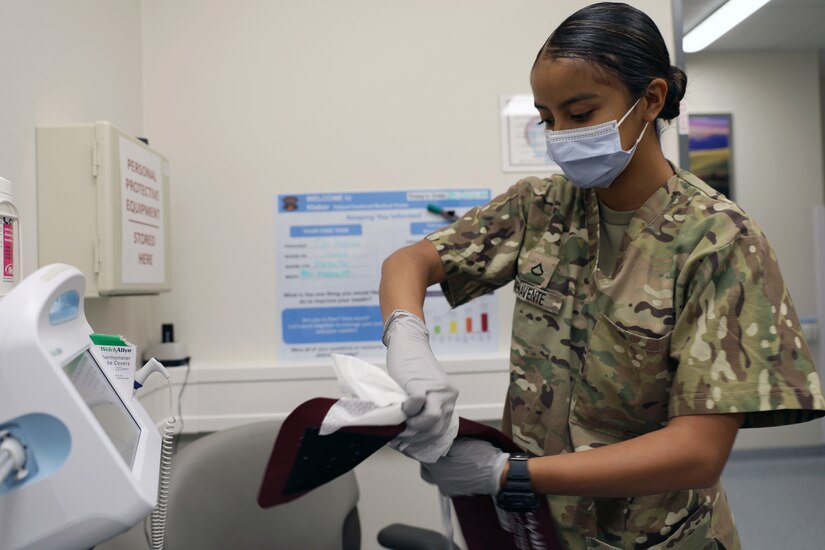
"If multiple agencies are buying the same, exact things, it makes sense to consolidate requirements and have one contract that everyone can order off of instead of 15 or 16 separate contracts," Robert Warnick, with DLA's Industry Engagement Program Office, said. "Not only does it save contracting resources and time, buying in bulk rather than in pieces usually leads to better prices."
DLA has been consolidating requirements since it was established to do that for the military services in 1961. Of the 4.5 million contract actions carried out by the federal government in fiscal 2019, 3.6 million belonged to DLA, DLA Acquisition Director Matt Beebe said.
"Despite the volume, DLA has a four-year "spend under management" average of 81% compared to a governmentwide average of 46%," he said. SUM is the percent of an organization's spending that's actively managed according to category management principles to ensure best-value solutions, remove redundancies and save money for multiple buyers.
OMB assigns best-in-class designations to contracts that represent a preferred governmentwide solution because they incorporate pre-vetted, market proven strategies. DLA Energy's Direct Delivery Fuels Program and DLA Troop Support's Electronic Cataloging System for medical items are both rated as best in class.
ECAT allows customers to browse, compare and order items ranging from pharmaceuticals and lab equipment to commercial medical supplies with U.S. delivery within 72 hours of order receipt. The Direct Delivery Fuels Program provides worldwide acquisition, material management and shipment of commercial fuel.
"Any time an organization like NASA, the Federal Aviation Administration or Customs and Border Protection lands a plane at an airport and uses our DLA AIR [Aviation Into-Plane Reimbursement] card, that's considered use of a BIC contract," Warnick said.
DLA has spent the past decade expanding contract support for common items to whole-of-government partners. Although the agency's primary mission is warfighter support, $7 billion of its $40 billion in contract obligations during fiscal 2020 supported government organizations at federal, state, local and international levels, he added.
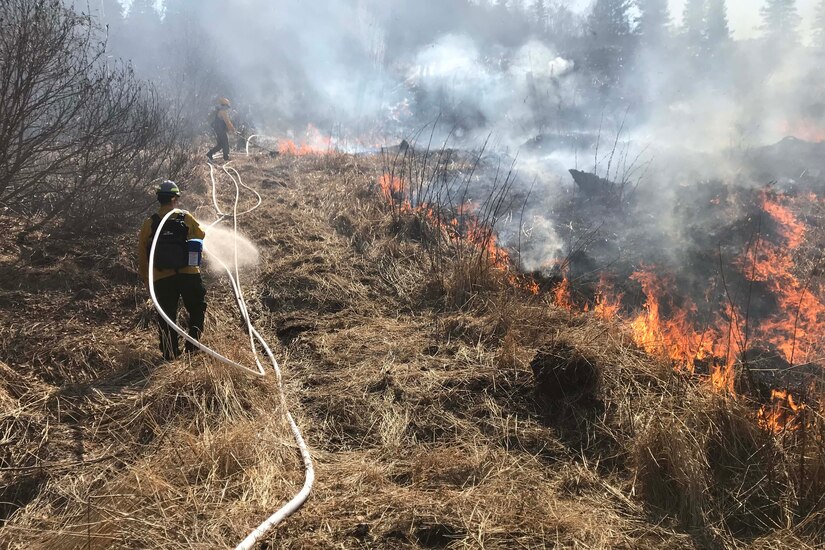
In 2015, the agency began working with officials from the Department of Agriculture's Wildland Fire Protection Program and the Forest Service to determine types and quantities of items to order and pre-stock in DLA warehouses for wildfires across the nation. DLA now manages 295 wildland firefighting items, allowing the USFS to focus on fighting fires rather than acquisition and logistics.
DLA's support during disaster relief and humanitarian assistance operations to agencies like the State Department, Federal Emergency Management Agency and Army Corps of Engineers also fall within category management.
"Category management really comes to light when there's a crisis like the COVID-19 pandemic or a natural disaster because nowadays other agencies immediately turn to DLA for support. They realize we've been doing this, we've built the relationships with suppliers and already have the strategic-level contracts, vendor management and demand management in place to surge quickly," Warnick said.
Though category management strategies often focus on price, Beebe said aspects like agility and flexibility are just as important. DLA's ability to procure rapid COVID-19 test kits within a week of requests from the Department of Health and Human Services illustrates the importance of being able to rapidly acquire direly needed supplies, he said.
"It's the same with hurricane support," Warnick added. "You never know when a storm is going to happen, but when it does you want somebody to be able to provide a quick response. That's exactly the capability we've developed through our long-term contracts with vetted, trusted contractors."
Making other federal agencies aware of DLA's existing contracts and sharing information about the supplies and services it offers is a key part of category management, he continued. DLA is working with the Defense Health Agency and Department of Veterans Affairs officials to assess how they can benefit from contracts already in place for the services. Contracting officers also take extra steps when reviewing new requirements to determine whether an existing contract could be leveraged.

Even without category management initiatives and federally recognized designations like best in class, Warnick said DLA would still consolidate requirements and compete for the best prices.
"Our business model has always been about looking at ways to be the most efficient as we meet customers' needs; that's what DLA is about," he said.
Sports Heroes Who Served: Tennessee Football Coach Served in World Wars I, II
Nov. 17, 2020 | BY David Vergun , DOD News
By the time Robert Reese Neyland graduated from the U.S. Military Academy at West Point, New York, in 1916, he had made a name for himself in three sports.
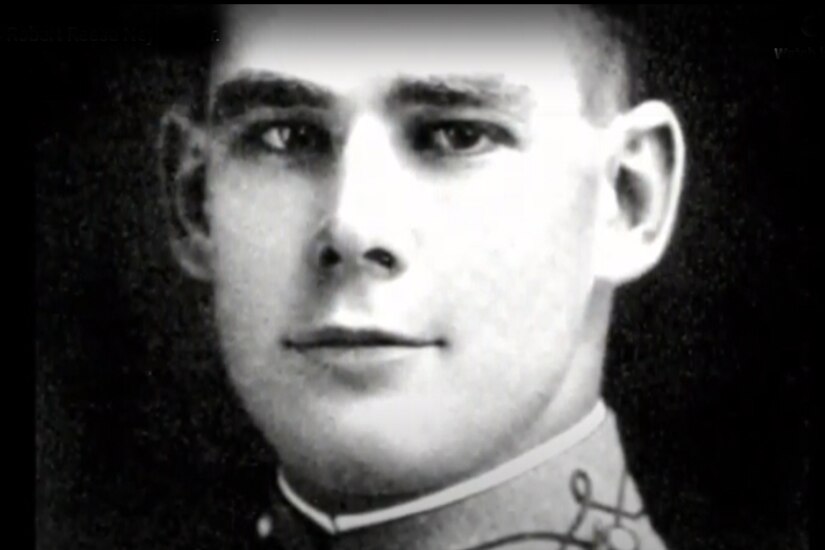
As a lineman for the football team, he helped the Black Knights win the Army-Navy games from 1914 to 1916.
As a baseball pitcher for the Black Knights, he authored a 35-5 record. In 1914, he fired the first no-hitter in Army history when he blanked Colgate.
In boxing, he was an undefeated, heavyweight boxing champion for his final three years at the academy.

Neyland also found time for academics, graduating near the top of his class.
Several professional baseball teams, including the New York Giants, tried to lure Neyland to their teams with big-money offers, but he decided to stay in the Army where he was deployed to Texas as an Army Corps of Engineers officer and helped erect levees along the Rio Grande River.
Neyland then served as an engineer in France during World War I.
In 1921, he returned to West Point as an aide to Army Brig. Gen. Douglas MacArthur, then the academy's superintendent. While there, he also assisted in coaching football, baseball and boxing.
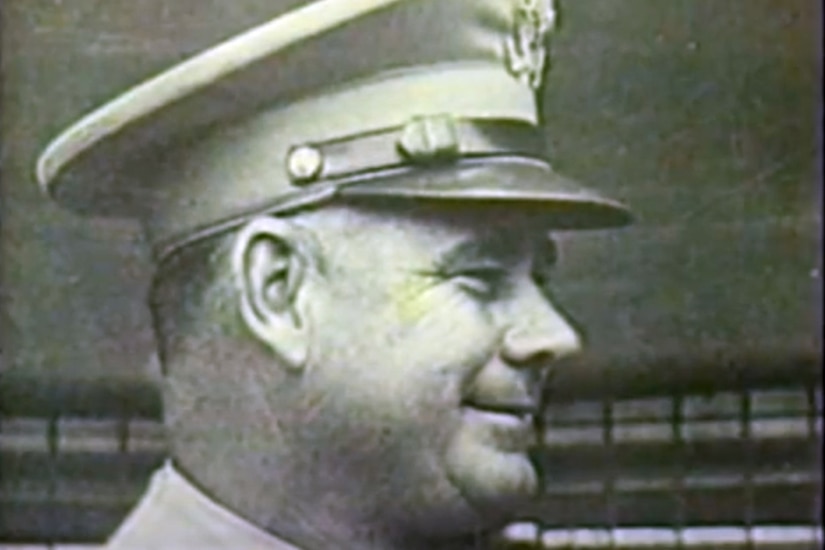
In 1925, Neyland became the head football coach at the University of Tennessee while continuing his military duties as an ROTC instructor.
Neyland's coaching career was disrupted twice — when he was recalled to active duty in 1934 and deployed to Panama and again in May 1941 just before the start of World War II.
In 1942, Neyland was appointed head coach of the Eastern All-Army team that took on National Football League clubs to raise money for the Army Emergency Relief fund. The team played three games, defeating the New York Giants and Brooklyn Dodgers before losing to the defending NFL champion Chicago Bears.


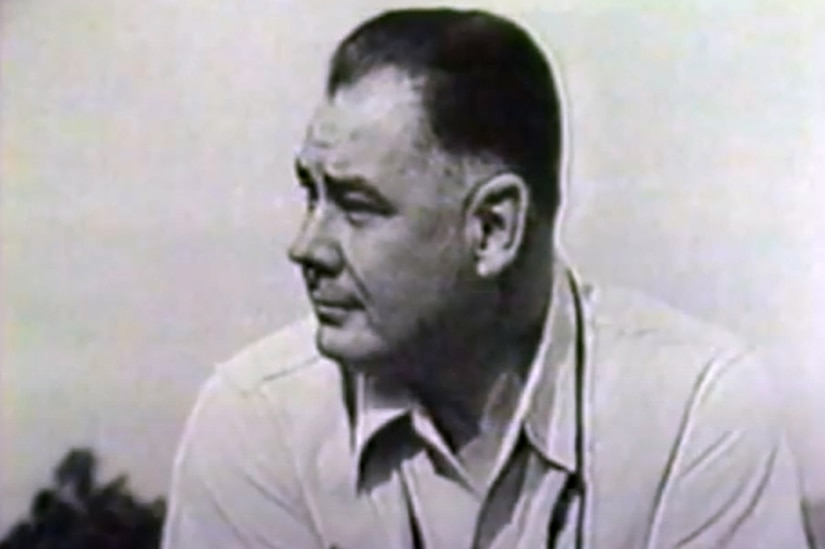
Neyland then served in China, Burma and India, supervising the transport of Allied war supplies across the Himalayan Mountains. He left the Army as a brigadier general in 1946.
In 1946, Neyland resumed coaching at UT, where he earned the nickname "the General."
In 1952, he quit his job as coach and became the UT athletic director for a decade. During that time, he helped to design UT's stadium.
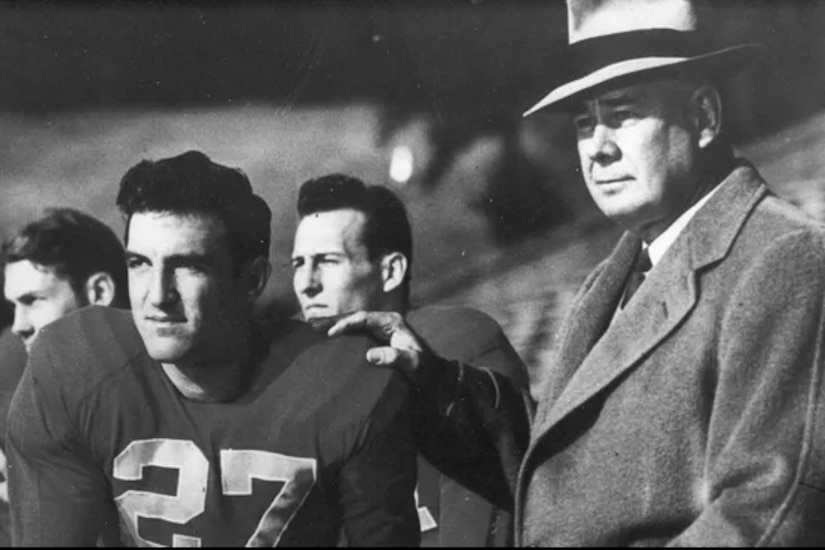
During his legendary coaching career in Knoxville, Tennessee, he compiled an overall record of 173-31-12, winning four national championships and seven conference titles.
Neyland died in 1962. Today, the University of Tennessee football stadium is named in his honor and there's also a statue of him there.
DOD-Wide Audit Improves Efficiencies to Benefit Warfighter
Nov. 17, 2020 | BY DAVID VERGUN , DOD News
With the exception of a couple of organizations, the Defense Department has completed most of its third annual comprehensive financial statement audit covering the entire enterprise, worth about $2.9 trillion, a DOD official said, adding that there have been improvements resulting from the audit that will directly benefit the warfighter.
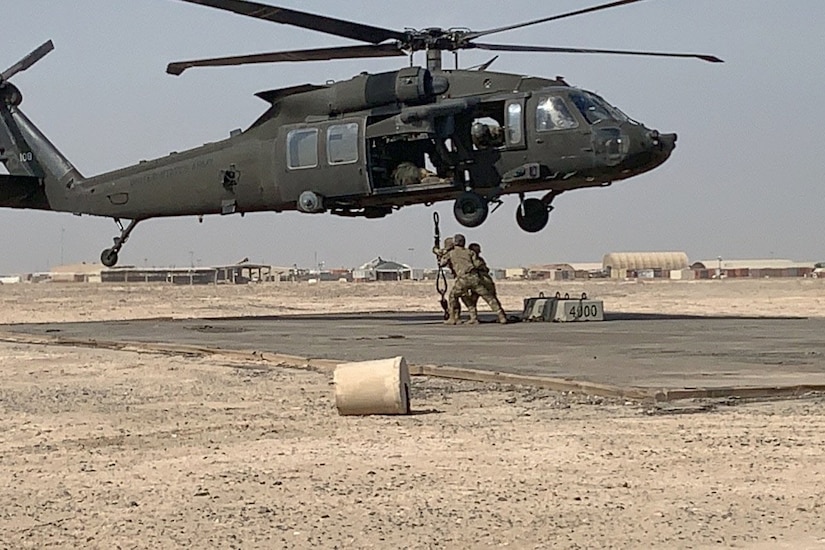
As of Nov. 12, DOD had cleared more than 530 findings, which are 16.3% of the discrepancies from the prior year’s audit, Thomas W. Harker, who is performing the duties of the under secretary of defense (comptroller)/chief financial officer, said at a Pentagon press briefing.
Several hundred more discrepancies should be cleared by next month when auditors complete their work. None of the discrepancies were related to fraud, he noted.
The cost of this year's audit was approximately $203 million, he said, with about $700 million in savings identified.
The ultimate goal is to get a clean financial statement audit opinion across the entire department, Harker said, but the lack of a positive opinion should not be regarded as a failure.

"We've been clear that this is a journey that will require a sustained effort over several years. And we remain committed to this goal and continue to make significant progress," Harker said.
The DOD audit is actually 24 separate audits of the military services, as well as defense agencies.
Harker provided some examples:
- The Navy eliminated three material weaknesses, two on their general fund and one on their working capital fund; the Marine Corps eliminated one material weakness, he said.
- The Defense Information Systems Agency has improved its business processes and controls, resulting in decreased time required to deliver property to customers, improved accuracy of property records and improved accuracy of financial statements.
Among the organizations expected to receive a clean audit, besides DISA, are: the U.S. Army Corps of Engineers — Civil Works; the Military Retirement Fund; the Defense Health Agency — Contract Resource Management; the Defense Contract Audit Agency; the Defense Finance and Accounting Service; the Defense Commissary Agency; and the DOD's Office of the Inspector General.
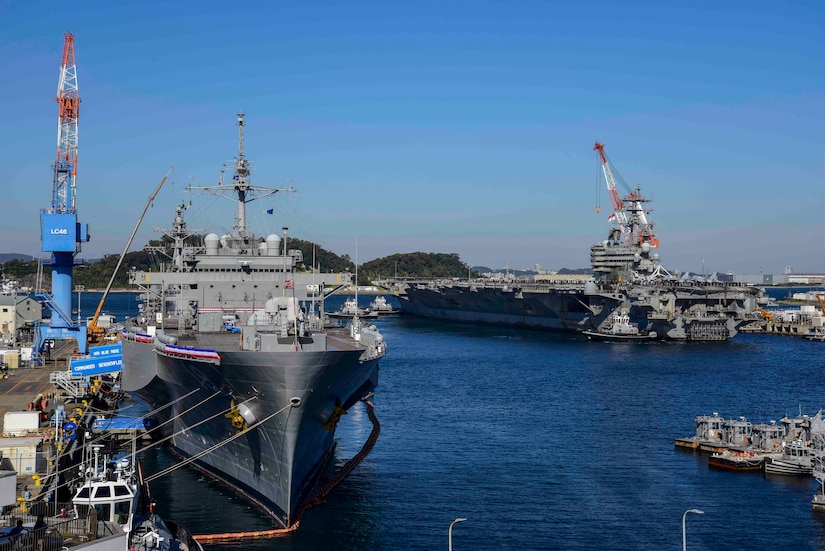
Due to the COVID-19 pandemic, auditors were prevented from doing a lot of in-person travel and testing, he said. Nevertheless, the auditors did a lot of virtual testing, using such things as digital media and photos.
Independent public accounting firms, along with DOD and the Office of the Inspector General perform the audits. About 1,400 auditors conducted more than 100 in-person site visits this year and more than 530 virtual site visits, he said.
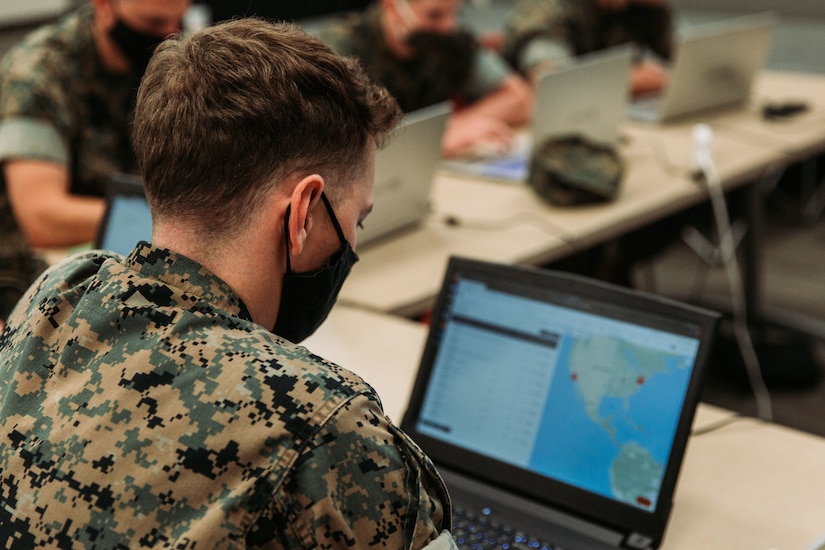
Audit remediation is one of the major components of the National Defense Strategy lines of effort focused on reforming business processes for greater efficiency and effectiveness.
Harker said the audit provides the following benefits:
- Improves the quality of the department's financial statements and underlying data available to the public, including providing a reliable picture of its assets, liabilities and spending.
- Highlights areas where the department needs to improve its accountability over assets and resources.
- Improves cybersecurity.
- Provides accountability and transparency to Congress and the American public.
- Identifies legacy systems that need to be eliminated.
- Identifies where too many systems are in place and where consolidation of systems will improve efficiencies.
- Identifies previously unknown equipment that's available for the warfighters.
- Provides more accurate financial data that gives leaders improved ability to use that data to make decisions.
